Bird Mites
- Article
- Bird Mites
Bird Mites
Scientific Name: Nephila spp.
How to identify a Bird Mites
Bird mites are not insects as some of the public may think as they have eight legs and two body parts. The most common mite associated with bird nests is the “Starling mite” or “Tropical fowl mite” (Ornithonyssus bursa) and it is a member of the Family Macronyssidae. Sometimes other species, the Northern fowl mite (Ornithonyssus sylviarum) or the chicken mite (Dermanyssus gallinae) are the culprits. Occasionally another species, the tropical rat mite (Ornithonyssus bacoti) is associated with rats’ or mice nests as the name suggests.
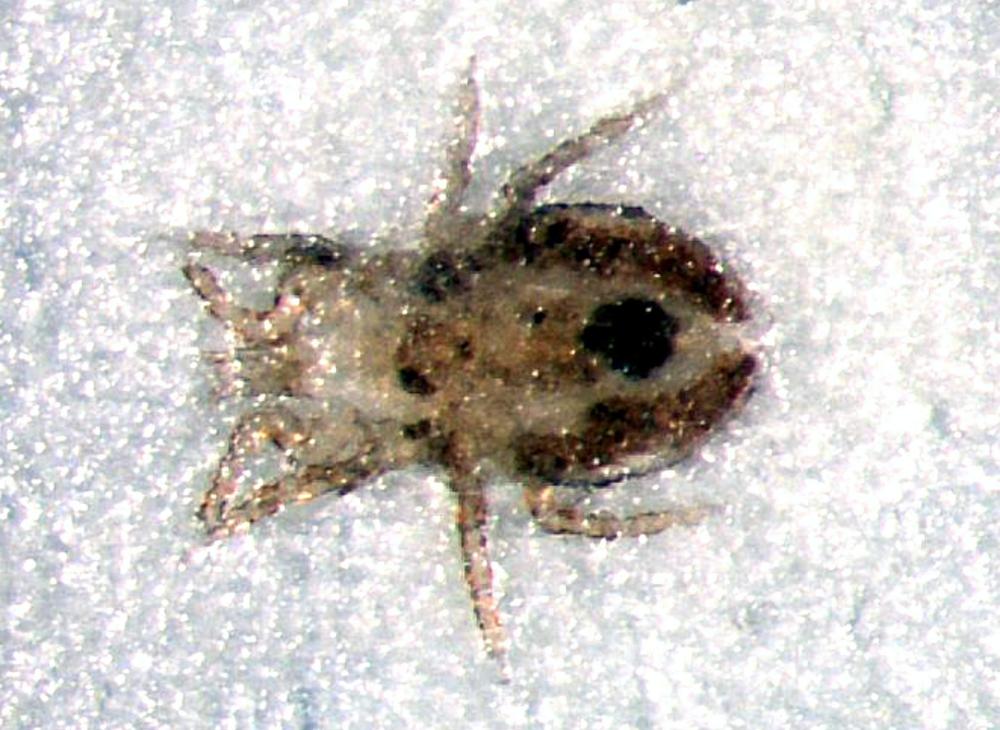
Where are Bird Mites commonly found?
Bird mites can be found in both commercial and domestic premises where birds are nesting.
Why are Bird Mites considered a pest?
Fortunately, bird mites do not transmit diseases and their pest status is due entirely to their practice of “test biting” on humans. As with fleas, they inject saliva to assist with their feeding and it is the saliva which causes the intense irritation. The irritation can lead to severe itching and subsequent rashes.
What is the biology and lifecycle of bird mites?
Ornithonyssus bursa is a small mite and is barely visible to the unaided eye. It is oval in shape and has a covering of short hairs. It is an obligate parasite and feeds on the blood of a number of exotic bird species, chickens and some native species. An unfed mite is virtually transparent but is reddish-purple after a blood meal. They move quickly when they leave the host nest and may be visible in literally hundreds or even thousands as they swarm down a wall looking for a feed. They are most common during spring and early summer when the birds are in breeding mode. The life cycle is approximately seven days.
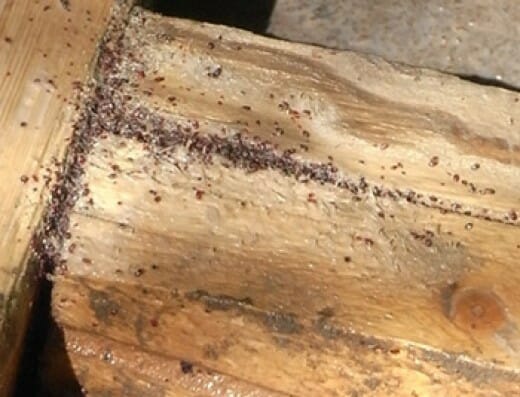
Chemicals Required to Control Bird Mites
Apply insecticide powder and surface spray to all affected areas, preferably containing pyrethin.
Management Tips for Bird Mites
Identification Proper identification of bird mites is very important in determining how to control mite infestations.
Finding and removing bird nests The best approach for controlling an infestation is to locate and remove bird nests. When removing nests, a mask and gloves should be worn to prevent transfer of mites, and bacterial infections. Nests may be found:
-
around eaves and in chimneys
-
in roof spaces
-
in cavities in walls
-
in foundations and basements
-
around porches
-
on window ledges.
Prevention and eradication Prevent birds from occupying spaces in houses by repairing broken tiles and blocking openings in eaves or roof cavities. To eradicate bird mites, treat the area with an approved insecticide such as a surface spray or insecticide powder. A registered pest controller may be required if the nesting material is inaccessible or large areas are involved.
PRODUCT SOLUTIONS
-
 Coopex Dust Insecticidal Dusting Powder10g/kg Permethrin
Coopex Dust Insecticidal Dusting Powder10g/kg PermethrinCoopex Dust Insecticidal Dusting Powder is registered for the control of cockroaches, ants, fleas, silverfish and bed bugs in and around domestic and industrial premises, food preparation and storage areas. Also for control of mushroom flies in mushroom housing and bees in wall cavities.
-
 Starrdust Pro Duckbill + ‘One-Shot’ 400g20g/kg Permethrin 40:60, 5g/kg Triflumuron
Starrdust Pro Duckbill + ‘One-Shot’ 400g20g/kg Permethrin 40:60, 5g/kg TriflumuronThe StarrdustPRO ‘ONE-SHOT’ is a ready-to-use pod that screws straight onto the StarrdustPRO DUCKBILL Duster head. It is prefilled with 400 grams of premium StarrdustPRO Industrial Strength dusting powder.
-
 Delta Pro 25SC Professional Insecticide25g/L Deltamethrin
Delta Pro 25SC Professional Insecticide25g/L DeltamethrinFor the control of a range of insect pests such as spiders, cockroaches, flies, ants, mosquitoes in various situations.
-
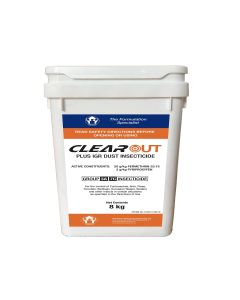 Clear Out Plus IGR Dust Insecticide 8kg Bucket20g/kg Permethrin, 2g/kg Pyriproxyfen
Clear Out Plus IGR Dust Insecticide 8kg Bucket20g/kg Permethrin, 2g/kg PyriproxyfenClearOut Plus IGR Dust Insecticide is a dual active dustable powder containing Permethrin and Pyriproxyfen for the control of adult and juvenile insects. ClearOut Plus IGR Dust Insecticide is formulated as a light, dustable powder featuring two modes of action in one application to provide a quick knockdown combined with a juvenile insect hormone regulator to stop the breeding life cycle.
-
 Cislin 25 Professional Insecticide25g/L Deltamethrin
Cislin 25 Professional Insecticide25g/L DeltamethrinCislin 25 Professional Insecticide is a broad spectrum low odour insecticide with excellent residual activity.
-
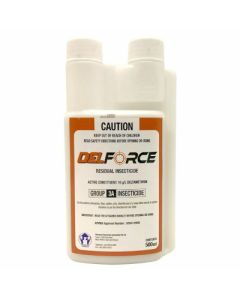 Delforce Residual Insecticide 10SC10g/L Deltamethrin
Delforce Residual Insecticide 10SC10g/L DeltamethrinDelforce Residual Insecticide 10SC is a water-based insecticide for the quick knockdown of spiders and general insects at very low doses. Delforce is also formulated for the control cockroaches, fleas, spiders, ants, silverfish and of a range other insects.
-
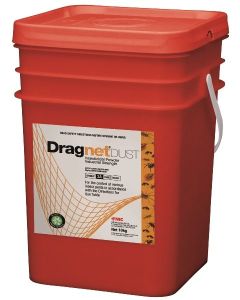 Dragnet Dust Insecticidal Powder2% Permethrin
Dragnet Dust Insecticidal Powder2% PermethrinDragnet Dust Insecticidal Powder is a 2% permethrin, broad-spectrum insecticide dust designed to reach into limited access areas. Dragnet Dust's super-fine formulation gives excellent coverage and spread. It is registered for the control of ants, spiders, fleas, cockroaches, silverfish, bed bugs, wasps, and bird mites in domestic, institutional & industrial premises. Also for the control of hide beetles, mushroom, sciarid flies and Potato moths.
-
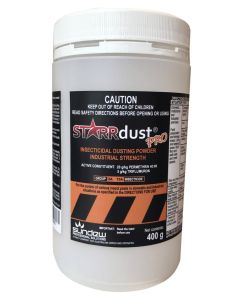 Starrdust PRO One-Shot Insecticidal Dust 400g20g/kg Permethrin, 5g/kg Triflumuron
Starrdust PRO One-Shot Insecticidal Dust 400g20g/kg Permethrin, 5g/kg TriflumuronThe Starrdust PRO One-Shot Insecticidal Dust 400g is an industrial-strength dust designed for use with the Starrdust PRO Duckbill Duster. It is a ready-to-use broad-spectrum insecticide with a unique formulation. It controls a wide range of insect pests including cockroaches, silverfish, spiders, ants, fleas, carpet beetles, bed bugs, European wasps, feral honey bees, bird mites, subterranean termites, hide beetles, millipedes, woodlice and clothes moths.
-
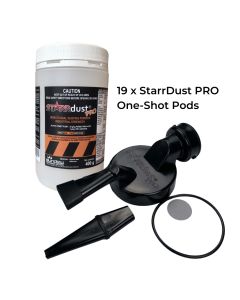 Starrdust PRO One-Shot Insecticidal Dust 19 x 400g + Duckbill20g/kg Permethrin, 5g/kg Triflumuron
Starrdust PRO One-Shot Insecticidal Dust 19 x 400g + Duckbill20g/kg Permethrin, 5g/kg TriflumuronA convenient kit of 19 x Starrdust PRO One-Shot Insecticidal Dust 400g Pods and a bonus Duckbill Duster. StarrDust PRO is an industrial-strength dust designed for use with the Starrdust PRO Duckbill Duster. It is a ready-to-use broad-spectrum insecticide with a unique formulation. It controls a wide range of insect pests including cockroaches, silverfish, spiders, ants, fleas, carpet beetles, bed bugs, European wasps, feral honey bees, bird mites, subterranean termites, hide beetles, millipedes, woodlice and clothes moths.
-
 Tempo Residual Insecticide 1L25 g/L betacyfluthrin
Tempo Residual Insecticide 1L25 g/L betacyfluthrinTempo Residual Insecticide is a fast-acting, knock-down, broad-spectrum insecticide for general insect control in domestic and commercial situations, as well as for the control of pest insects of turf and ornamental plants.
-
 Starrdust PRO Insecticidal Dust20g/kg Permethrin 40:60, 5g/kg Triflumuron
Starrdust PRO Insecticidal Dust20g/kg Permethrin 40:60, 5g/kg TriflumuronStarrdust PRO Insecticidal Dust is a ready-to-use, broad spectrum insecticide with a unique formulation. It controls a wide range of insect pests including cockroaches, silverfish, spiders, ants, fleas, carpet beetles, bed bugs, European wasps, feral honey bees, bird mites, subterranean termites, hide beetles, and 3 new pests not on any dust product in Australia – millipedes, woodlice and clothes moths.
-
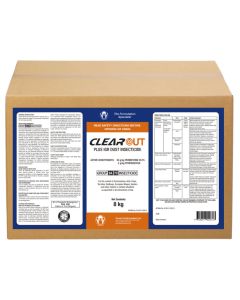 Clear Out Plus IGR Dust Insecticide 8kg Carton20g/kg Permethrin, 2g/kg Pyriproxyfen
Clear Out Plus IGR Dust Insecticide 8kg Carton20g/kg Permethrin, 2g/kg PyriproxyfenClearOut Plus IGR Dust Insecticide is a dual active dustable powder containing Permethrin and Pyriproxyfen for the control of adult and juvenile insects.
-
 Clear Out IGR Dust Insecticide Pods (11 Pods x 350g)20g/kg Permethrin, 2g/kg Pyriproxyfen
Clear Out IGR Dust Insecticide Pods (11 Pods x 350g)20g/kg Permethrin, 2g/kg PyriproxyfenClearOut IGR Dust Insecticide Pods bring the proven performance of ClearOut Plus IGR Insecticide Dust into a compact, easy-to-use 350g pod. Designed for professional pest controllers, these pods eliminate the hassle of decanting — simply screw your duster directly onto the pod using the adaptor and start applying.
JOIN OUR NEWSLETTER NOW!
Be the first to hear about the latest specials, products, tips and ideas.

